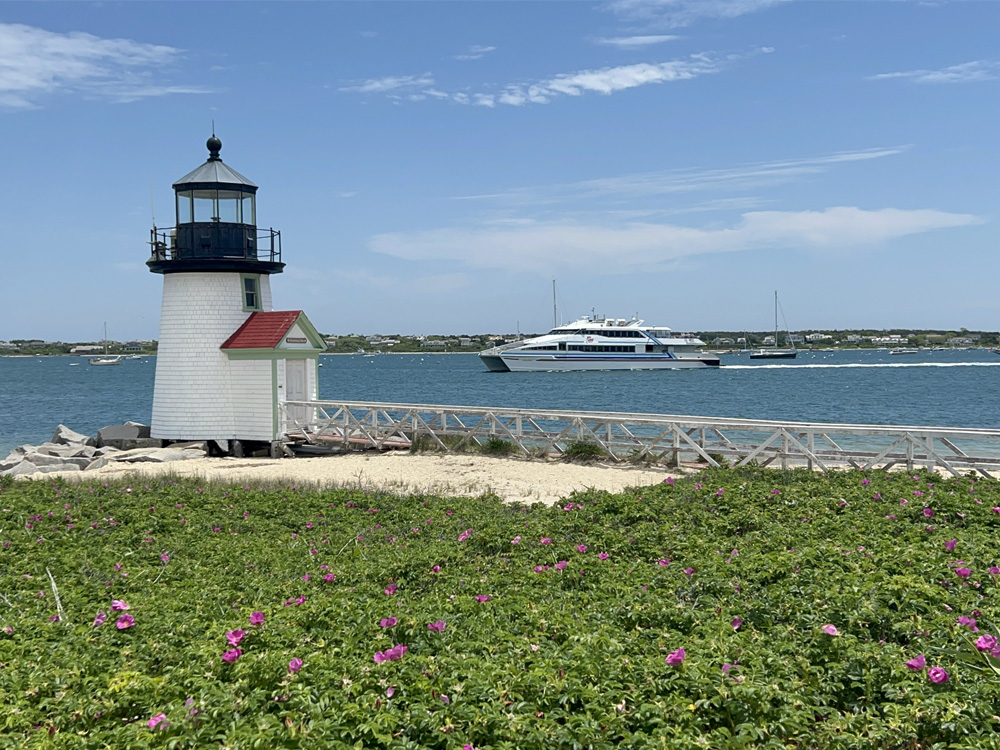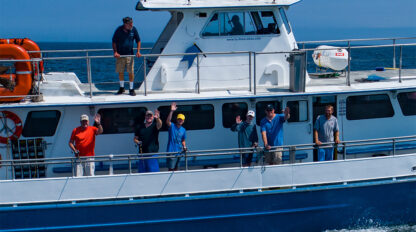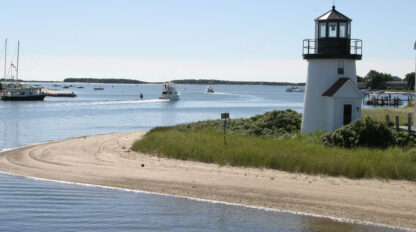Getting to Nantucket: Your Ultimate Travel Guide

The Little Grey Lady is calling
Nantucket, an blissful island off the coast of Cape Cod, is a favorite destination for those seeking a blend of island charm, beautiful natural landscapes, and plentiful local shopping and dining. Whether you’re planning a short stay, a daytrip, or travelling for business, the journey to Nantucket is part of the adventure. Let’s explore the various transportation options available and discover why Hy-Line Cruises’ high-speed passenger vessel is the premier choice.
Some folks might imagine that getting to Nantucket is a bit of a hassle, like venturing to another world. But it’s straightforward! There are no bridges or tunnels connecting Nantucket to the mainland, so the only way to reach the island is by boat or plane. Just 30 miles off the coast of Massachusetts, it’s a short and simple journey once you get to the shore.
By Ferry
The breeze in your hair, the waves lapping the side of the boat, the beautiful wake off the back… enjoy all this and more when you choose to take a ferry to Nantucket. You have choices when you want to take the trip over. Year-round service is available from Hyannis with Hy-Line Cruises and Steamship Authority, the only ferry service that can transport cars to the island. Traditional ferry service takes approx. 2 hours and 15 minutes, and high-speed takes only 1 hour. Service also exists from NY and Northern NJ, although that trip is only available on weekends. New Bedford, MA has a port offering ferry service daily from May – mid-October which will get you there in 2 hours. Hy-Line offers convenient daily departures year-round. We offer a 1-hour high speed trip over, with comfortable seating, refreshments available, friendly staff, and allow pets and bikes too!
By Personal Boat
If you’re fortunate enough to have your own boat or know someone who does, sailing across the sound to Nantucket is entirely possible. Simply book a mooring at one of the island’s many marinas and set sail from Cape Cod or Southeastern Massachusetts. It’s a real delight to drop anchor in such a fantastic spot, set your own schedule, and enjoy the adventure along the way. Just be sure to plan for good weather for the crossing, but overall, it’s not a challenging trip.
By Plane
Nantucket is accessible by air, with flights available from Boston, New York, and other major cities. With quick flights, plenty of options of departure points, convenience of booking private transportation if funds allow, and multiple flights a day it is certainly a tempting option to fly. The island’s airport is small but well-equipped, making flying a quick and convenient option. However, flights can be costly, particularly during peak season, and you may still need transportation upon arrival to reach your final destination on the island as the airport is centrally located on the island and not within walking distance to the downtown area.
Why Choose Hy-Line Cruises’ High-Speed Passenger Vessel?
Among the many ways to reach Nantucket, Hy-Line Cruises’ high-speed passenger vessel stands out for several compelling reasons:
Comfort and Amenities
Hy-Line Cruises prides itself on providing a comfortable and enjoyable travel experience. The high-speed ferry features spacious seating, climate-controlled interiors, and clean restrooms. For those who prefer to enjoy the fresh sea air, outdoor seating is also available. Onboard amenities include a snack bar offering beverages including soda, water, coffee, tea, and a fully stocked bar, breakfast and lunch options, and plenty of snacks to keep you fueled up ensuring you arrive at your destination relaxed and refreshed.
Scenic Views
One of the most delightful aspects of traveling by ferry is the scenic views. As you glide across Nantucket Sound, you’ll be treated to stunning vistas of the Cape Cod coastline and the open ocean. It’s a perfect opportunity to start your vacation early by enjoying the natural beauty of the region right from the deck.
Reliability and Frequency
Hy-Line Cruises operates multiple daily departures to Nantucket, providing flexibility to fit your schedule. Whether you’re planning a day trip or an extended stay, the frequent service ensures you can travel at a time that suits you best. Additionally, Hy-Line Cruises has a strong reputation for reliability, so you can count on us to get you to your destination on time.
No Car Needed
Traveling on Hy-Line Cruises’ high-speed passenger vessel means you don’t need to worry about the hassle and expenses of bringing a car. Nantucket is extremely walkable, has an excellent public transportation system, as well as bike rentals, taxis, and rideshare services, making it easy to explore the island without a vehicle.
When it comes to traveling to Nantucket, the journey should be as enjoyable as the destination itself. While there are various transportation options available, Hy-Line Cruises’ high-speed passenger vessels offer a superior blend of speed, comfort, and convenience. Skip the traffic and long waits and start your island adventure with a relaxing and scenic ferry ride. Choose Hy-Line Cruises for an unforgettable trip to Nantucket!


